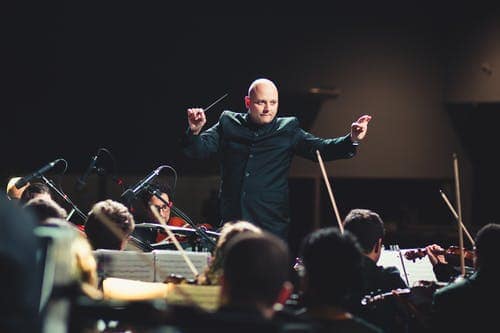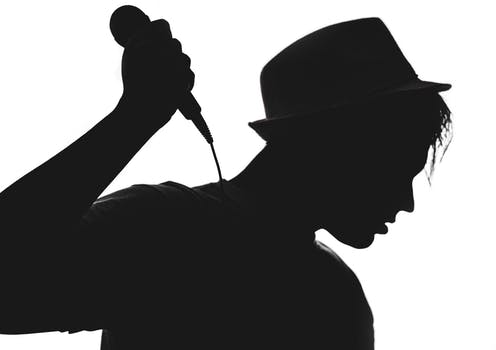Pianos are a key and integral part of an orchestra.
They are one of the main instruments that is needed when setting up an orchestra and if you look at an orchestra layout, which I will be discussing about below in this article, you will notice that there is a designated space for pianos and keyboards in an orchestra.
The most common type of piano used in orchestras is the grand piano which is an instrument that stands on 3 legs
It has a row of 88 black and white keys and comes with an extreme wide range of playing possibilities because of it’s seven octaves.
With it’s many possibilities, the piano is simply like an orchestra within an orchestra
What this means is that, using the piano or the grand piano in this case you can easily simulate the sounds of different instruments
And when you look at this critically, you discover that it has the makings of a full blown orchestra
The keyboard instruments that have been used with orchestra are the harpsichord, organ and piano.
Each instrument is vastly different from the other, but they are all related as keyboard mediums.
Within the orchestra they take on different roles than their solo function, some cases have them interchangeable with one another for the same purpose.
Related: Here is an article I wrote on if playing the piano can make you smarter?
What is the Role of the Piano in an Orchestra

The piano is one instrument that has the largest range of any instrument in the orchestra
It is a tuned instrument and you can play many notes at once using just one hand
One of the major roles of the piano in the orchestra is that it supports harmony.
If you have watched classical shows such as the ones put out by Yanni, then you definitely would have seen some really great pianists supporting the harmony of the overall presentation
In my opinion, if there is no piano then the presentation lacks that awesome harmony that makes classical music nice to listen to.
It also has another role which is as a solo instrument (an instrument that plays by itself) and plays both melody and harmony.
While keyboards are often thought of as solo instruments, they can and do play supportive roles within a large ensemble.
In fact, most composers discussed here treated the instruments as another member of the symphony rather than as a featured instrument.
The piano tends to be an instrument used more as a feature than support, though this may be more due to the nature of the instrument itself rather than the composer’s desired use.
The harpsichord was only used as a continuo instrument, though its sound could easily penetrate the early developing orchestra.
The wind power of the organ allows it to hold its own within an orchestra and be heard in a supportive role.
With the modern size and range of the orchestra, the piano struggles to be heard with full ensemble, begging it to be used in sparser textures or solo.
If the composers did not have to worry about projection of sound within the group itself, maybe the keyboard instruments would serve a different purpose.
If that were to be the case that would likely change the style of writing for all orchestral instruments.
Also here is an article I wrote on how to change the pitch of a piano
What section is the Piano in an Orchestra?
Now for this question, we are going to be grouping the piano as a percussion instrument.
Now I know there is a major debate on whether this is true or not but bear with me here and just go with the flow.
So as to what section the piano is in an orchestra, I will say it is in the percussion instruments section.
The percussion section usually has the highest members in an orchestra.
Percussion instruments basically are any instrument that makes a sound when it is hit, struck or pressed down.
And this is where you have the most dedicated set of musicians because learning to play a percussion instrument is really difficult and not many people go through with it.
Some percussion instruments are tuned and can sound different notes, like the xylophone, timpani or piano, and some are untuned with no definite pitch, like the bass drum, cymbals or castanets.
Percussion instruments keep the rhythm, make special sounds and add excitement and color. Unlike most of the other players in the orchestra, a percussionist will usually play many different instruments in one piece of music.
The most common percussion instruments in the orchestra include the timpani, xylophone, cymbals, triangle, snare drum, bass drum, tambourine, maracas, gongs, chimes, celesta, and piano.
How many Pianos are there in an Orchestra?
While trying to come up with a specific answer for this question, here is what I found out – it really depends on the composer and the kind of sound they want to achieve.
Generally a modern full scale symphony consists of approximately one hundred permanent musicians, most often distributed as follows: 16–18 1st violins, 16 2nd violins, 12 violas, 12 cellos, 8 double basses, 4 flutes (one with piccolo as a specialty), 4 oboes (one with English horn as a specialty), 4 clarinets (one with bass clarinet as a specialty, another specializing in high clarinets), 4 bassoons (one with double bassoon as a specialty).
Furthermore 5–8 horns, 4 trumpets, 4 trombones (one with bass trombone as a specialty), 1 tuba, 1 kettledrum player, 3–4 percussionists (of whom at least one must also play kettledrum), 1–2 harps and a keyboard player (piano, celesta, harpsichord, etc.).
What this means is that a percussionist (in this case a pianist) is needed in just one place – meaning only one piano is needed.
But I have seen cases where there were as much as 4 to 5 pianos in the orchestra and the harmony was simply beautiful
So like I said earlier, it totally depends on the composer and what they want to achieve.
As a composer, you can go for as many pianos as you want as long as you get the right kind of music that you desire.
What Instruments are not used in an Orchestra?
While we have seen that the piano is a key instrument in an orchestra, there are other instruments that are not used as much.
Here they are
- Harp – This is one instrument that is rarely used in an orchestra. This is because it is considered as being awkward and a bit difficult to master.
- Glass Armonica
- Saxophone – The saxophone is quite popular and widely used in several music genres; particularly jazz. However, very rarely will you hear it or see it used for a classical composition. It wasn’t until recently that some composers began to add the sax in some of their works.
- Wagner Tuba –Not to be confused by the Tuba, the Wagner Tuba is a totally different instrument. The instrument was created at the behest of the famous German composer Richard Wagner. The Wagner tuba combines both the trombone and French horn tonal elements. Although called a tuba, it is considered sort of a horn by many. Even though you may not hear it or see it used too often, it is still used as an alternate doubling instrument.
- Alto Flute – From the woodwind family, the alto flute is a type of Western concert flute. It gives out a mellow, distinct and deeper tone like the Piccolo. One way to think of the alto flute is that it’s much longer than the traditional flute. Throughout history, there have been many famous composers who used the alto flute in some of their works.
- The Organ – while this is one of the oldest wind instruments known today, it is rarely being used in orchestras these days. This is because the modern day pipe organs and it’s likes are much more sophisticated and have a wide range of uses. Still when it is used, the organ provides really impressive and beautiful music.
Conclusion
Pianos are used in an orchestra because they provide harmony to the presentation.
They can also be used as a solo instrument to play the melody or harmony.
I hope this answers your question clearly.



